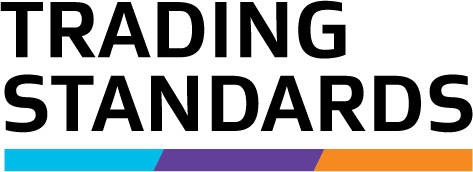Minimum resources required for each accreditation category
The minimum resources required for verifying and/or inspecting mass, length, volume, weighing instruments and measuring instruments.
This page should be read in conjunction with the Working Standards section.
Mass, length and volume
| Category | Resources | Reference/Additional Information |
|---|---|---|
| Traders weights M1 M2 M3 | Weighing instrument as required in Table 2 Set of Reference Standards as listed in Table 1
|
Reg 26 – 28 |
|
One metre rigid length standard Twenty metre flexible length reference standard |
Reg 29 -33 |
| Reg 47 | ||
|
Volume Standard(s) as listed in Table 3 | Reg 34, 35 |
| Gravimetric testing equipment as approved by Trading Standards | Reg 37 - 41 | |
| Milk delivery measures (level test only) |
Level equipment with 90 second sensitivity | Reg 42, 43 |
| Milk delivery measures (volume test) |
Volume measures as listed in tables 3-6 | Reg 42, 43 |
| Proving meter complying with specifications and construction as approved by Trading Standards | ||
| Beer delivery measures (volume test) | Volume measures as listed in tables 3-6 | Reg 44 - 46 |
| Proving meter complying with specifications and construction as approved by Trading Standards | ||
| Spirit dispensers | Graduated glass measures as listed in Table 4 | Reg 36 |
| Miscellaneous weighing or measuring instruments | Appropriate testing equipment as approved by Trading Standards | Reg 78 |
Weighing Instruments (Reg 48 – 66)
| Category | Maximum capacity of instrument | Minimum masses required | Class of masses |
|---|---|---|---|
| Class I | 100% of the instrument’s maximum capacity | F1 | |
|
Class II |
|
100% of the instrument’s maximum capacity | F2 |
|
Class III and IIII, automatic catch weighing Y(a) and Y(b), automatic weighing instruments, hoppers and bins |
≤ 300 kg | 100% of the instrument’s maximum capacity |
M1 and/or M2 |
| > 300 kg to 500 kg | 300 kg | ||
| > 500 kg to 1000 kg | 50% of the instrument’s maximum capacity | ||
| > 1000 kg to 2500 kg | 500 kg | ||
| > 2500 kg |
20% of the instrument’s maximum capacity 10% of instrument’s maximum capacity for hopper/bin weighing instruments |
||
|
Platform scales, weighbridges |
No max capacity |
10 x 1000 kg |
M1 or M2 |
| Beltweighers - 0.5, 1, 2 | Appropriate testing equipment as per Accredited Person test procedures | Technical policy TS-015(external link) |
Measuring Instruments (Reg 67 – 78)
| Category | Resources | Additional information |
|---|---|---|
| Class 0.3 – Liquid measuring systems on pipelines | Volume standards, as specified in Table 3 |
Reg 67, 68, 73 |
| Proving meter or loop prover, which has been approved for use by Trading Standards | ||
| Class 0.5 – Liquid measuring systems for refuelling aircraft or loading ships | Proving meter or loop prover, which has been approved for use by Trading Standards | Reg 67, 68, 73 |
Class 0.5:
|
Measures of volume that are proportional to the flow rate approved by Trading Standards and are within the maximum permissible error (MPE) detailed in Tables 3-6 |
Reg 67 - 73 |
| Proving meter or loop prover, which has been approved for use by Trading Standards | ||
| Class 1.0 – Measuring systems (other than LPG dispensers) for liquefied gases under pressure measured at a temperature equal to or above -10°C, and LPG dispensers for motor vehicles | Appropriate testing equipment, which has been approved for use by Trading Standards | Reg 67, 68, 70, 73 |
| LPG Master Meter | ||
| ASTM tables | ||
|
Class 1.5 – Measuring systems for liquefied carbon dioxide, or liquefied gases under pressure (other than LPG) measured at a temperature below -10°C (other than cryogenic liquids) Class 2.5 – Measuring systems for liquids at a temperature below -153°C |
Reference Weighing Instrument: A weighing instrument with a scale interval (e) ≤ 1/3rd of the MPE of the instrument under test (IUT), or Reference Measuring instrument (master meter): A master meter where the scale interval (e) is 1/5th of the MPE of the IUT and has a current Calibration Certificate from an ISO17025 accredited laboratory |
Reg 67, 68, 73 |
|
Area measuring instruments |
Standard reference area templates of suitable diameter to within an accuracy of ±0.1% of the nominal area. | Reg 76 |
|
One metre rigid length standard
Twenty metre flexible length reference standard |
Reg 75, 77 |
| Direct mass flow measuring instruments |
Reference Weighing Instrument: A class III weighing instrument with a capacity that allows for the gross weight of the largest delivery taken from the mass flow meter during testing, or Reference Measuring instrument (master meter): A master meter where the scale interval (e) is 1/5th of the MPE of the IUT and has a current Calibration Certificate from an ISO17025 accredited laboratory |
Reg 74 |
